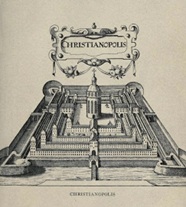

In 1639 he was appointed court preacher and councillor in Stuttgart and devoted himself to the reorganization of the church in Württemberg, before withdrawing in 1651 to Bebenhausen, where he served as abbot of the local abbey until his death. Between 16 he pursued his plans to establish a learned society under the patronage of a ‘pious prince’ to promote spiritual, political, and educational improvement of society, and he published several blueprints for the constitution of a Christian Brotherhood. He became pastor in the area of Vaihingen and, between 16, chief pastor at Calw.Īlthough he dissociated himself from the Rosicrucian turmoil, in 1619 Andreae published his utopian work, Christianopolis, that found resonance across Europe. After further foreign travel, Andreae took up his theological studies and was ordained into the Lutheran ministry in 1614. During this period Andreae is supposed to have been involved in the composition of the Rosicrucian manifestos, in particular of the Fama Fraternitatis and of the Chymische Hochzeit des Christian Rosenkreuz.

Following five years of travel abroad he returned around 1608 to Tübingen, where he met the Paracelsian Tobias Hess (1568–1614) and became a member of his circle. The grandson of the Lutheran theologian Jacob Andreae, he was born in Herrenberg and in 1601 moved to Tübingen where his studies at the University were wide-ranging and included astronomy and mathematics. Johann Valentin Andreae, writer of devotional literature, preacher, Christian utopian, art collector, naturalist, and member of the Fruchtbringende Gesellschaft, represents an imposing figure among theologians of the first half of the seventeenth century. (Source of image: Herzog August Bibliothek, Wolfenbüttel) Johann Valentin Andreae (1586–1654) Engraving of Johann Valentin Andreae by Wolfgang Kilian.


 0 kommentar(er)
0 kommentar(er)
